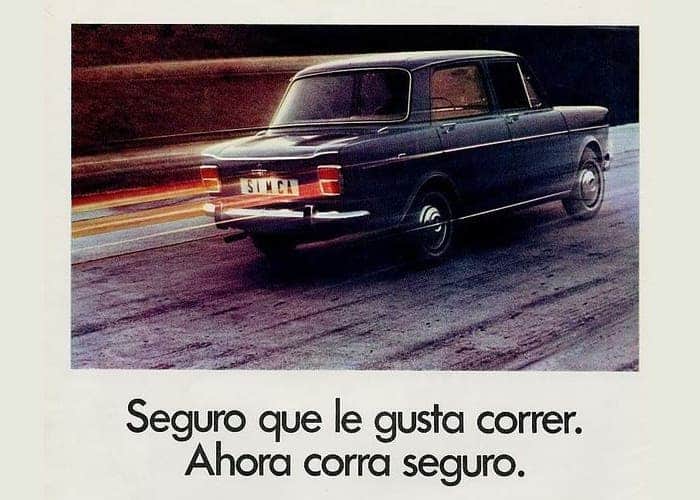If in the history of motorsport we made a collection of exemplary lives, Mario Revelli's should be present. The son of an artillery officer, Revelli was born in Rome when Italy was still a kingdom. Interested since he was a child in mechanics, his studies at the military academy took a back seat when discovered motorcycle chassis design. A passion that led him to finish second in the Italian Speed Championship in the 500cc class. Thus beginning the record that only a serious traffic accident could stop.
Reassured by slow recovery from his injuries, Revelli traded tracks for car styling desks upon being hired by Giovanni Battista Farina. Founder of the future Pininfarina. Thanks to which he fully entered the world of motorsports, designing models as refined as the FIAT 1500. One of the first cars conceived in a wind tunnel, which makes an exclusive pair with the ambulances he designed during World War II. Activity that, curiously, led him to be one of the main promoters of the current concept of family car under what he called "Functional body".
In fact, Revelli is regarded as the introducer of the minivan at FIAT. As well as one of the leading designers in the field of compact and family. Something that caught the attention of General Motors, which hired its services for its urban car department. An experience that he used on his return to Italy working for SIMCA when it was still making FIAT models. The context where he created his most popular and remembered work: the line of SIMCA 1000 with its body of three bodies. A show of ingenuity in introducing the defining elements of a saloon in less than 3 meters in length.

SIMCA 1000. A CAR FOR THE NEW MIDDLE CLASSES
After the Second World War nothing was the same as the previous moments. To begin with, the impact of the war created the need to establish democratic systems politically and socially cohesive. An effort not only moved to avoid falling into the errors of fascism, but also to fear of a possible socialist revolution cooked in social inequalities. In this sense, Western Europe advanced towards the creation of the so-called middle classes. A fact that implied access to consumption for millions of families, who also lived mainly in urban areas.
As it is, all of this had an obvious relationship with motorsport. Which, thanks to this, became a massive industry, needing new models capable of combining quality, practicality and good prices. Precisely the coordinates in which the conception of the SIMCA 1000 moved. Posed by Henri Pigozzi -head of the French SIMCA- as a small saloon capable of comfortably transporting five people plus packages with adjusted fuel consumption. In short, an economical vehicle in every way and useful for a mix of daily urban trips with eventual family trips.

Just the product demanded by the new middle classes that accessed consumption in the years of developmentalism. A type of market very well managed by FIAT. Which the French required to polish the design of the SIMCA 1000. In this way, Dante Giacosa - creator among others of the 500, 600 and 850 - adjusted some design coordinates with Pigozzi established in about 700cc, little more than 700 kilos and a consumption below the liter every ten kilometers. Thus, by 1959 a chassis had already been designed starting from FIAT elements. The same thing that Oscar Montabone did in the SIMCA offices with the engine, using elements of the FIAT 600 to reduce costs.

FROM SEPARATION OF ROADS TO GLOBAL SUCCESS
With various concepts on the table, the joint work between the French and the Italians came to an end in 1960. As a result of heated discussions, those of SIMCA did not accept the so-called project 122 presented by FIAT. A design that ended up being the germ of the future FIAT 850 but that at the same time marked the schism between both brands, going from here the development of the SIMCA 1000 in the full hands of the gala brand. After a few last touches and details, the plans were ready to be brought to life with a mass production in 1961. A matter for which a factory was needed, finding it on the assembly line where SIMCA produced under Ford license the Vedette until the moment.

Thanks to this, almost 10.000 square meters were put at the service of a car that sold almost 1.700.000 units between 1961 and 1978. A resounding success for knowing how to read the needs of a market in step with the advancement of the middle classes, which was manufactured under license in countries such as Spain -Barreiros-, Colombia -Chrysler Colmotor- or Chile -Nun and Germán-. In addition, having fulfilled its function as a family car, the brand itself protected sports versions born from collaborations with Abarth. A role in competition in which the rally variants and those prepared for single-brand cups such as the Simca Challenge in Spain stand out.

Proof of the good performance of the SIMCA 1000, which benefited from a simple but reliable design. A low weight combined with a mechanics of about 1000cc easily tricked. And the driving dynamics of a car with the engine and propulsion at the rear. What's more, Porsche was involved in the design of its four-speed transmission as an external consultant. Another reason to understand the reasons for the success of SIMCA 1000, which had brought together in its conception such essential firms in the history of motorsport as Dante Giacosa, Porsche or Mario Revelli himself.
Photographs: SIMCA / Barreiros / Colmotor









